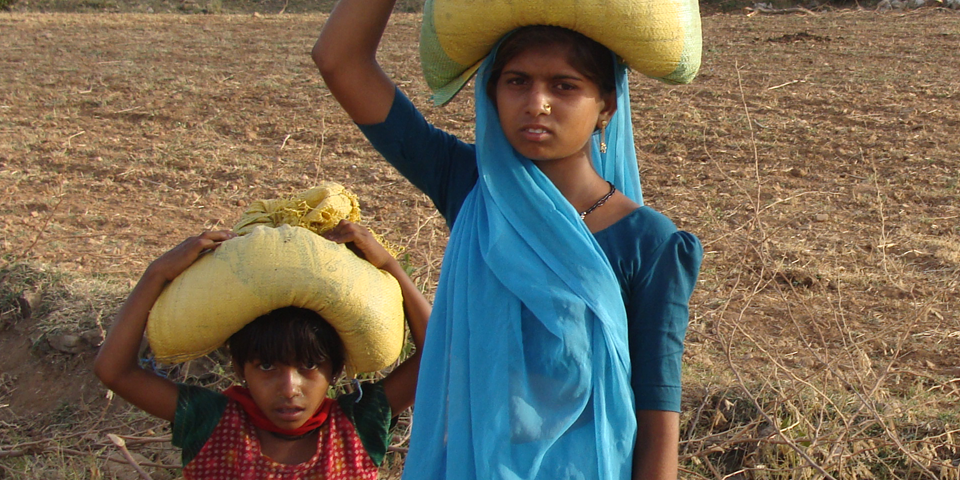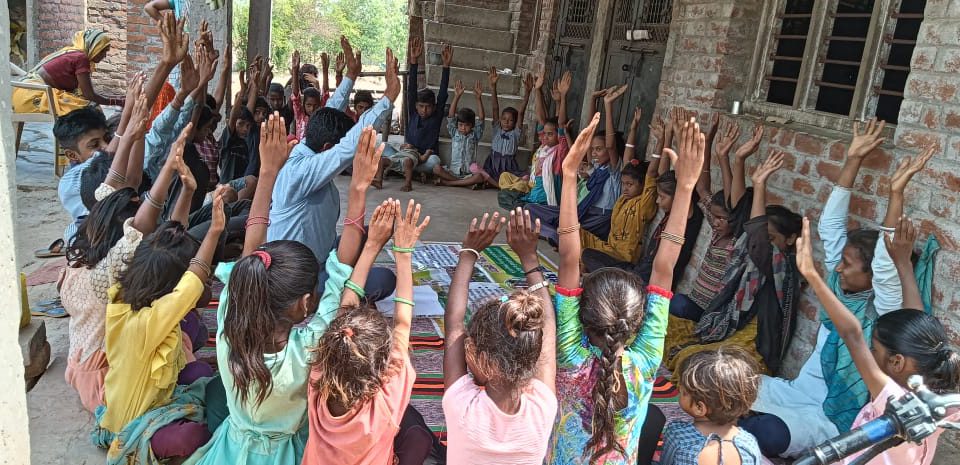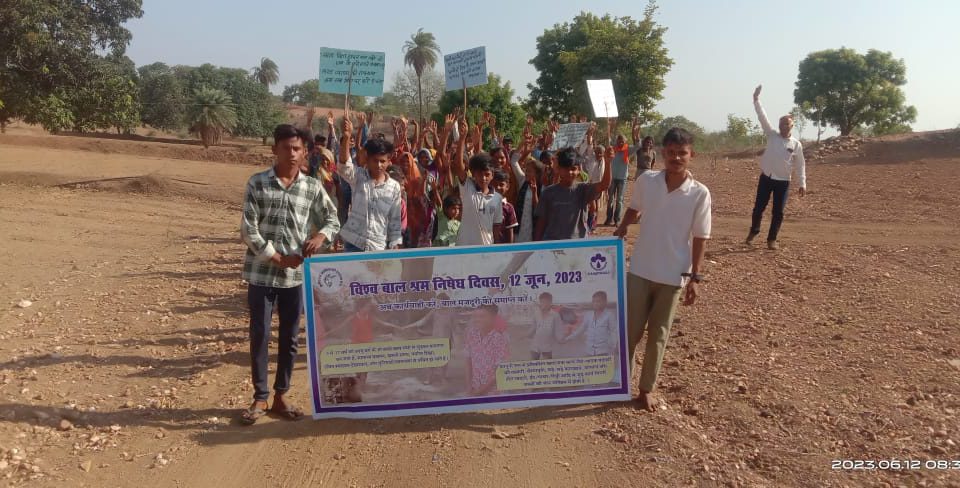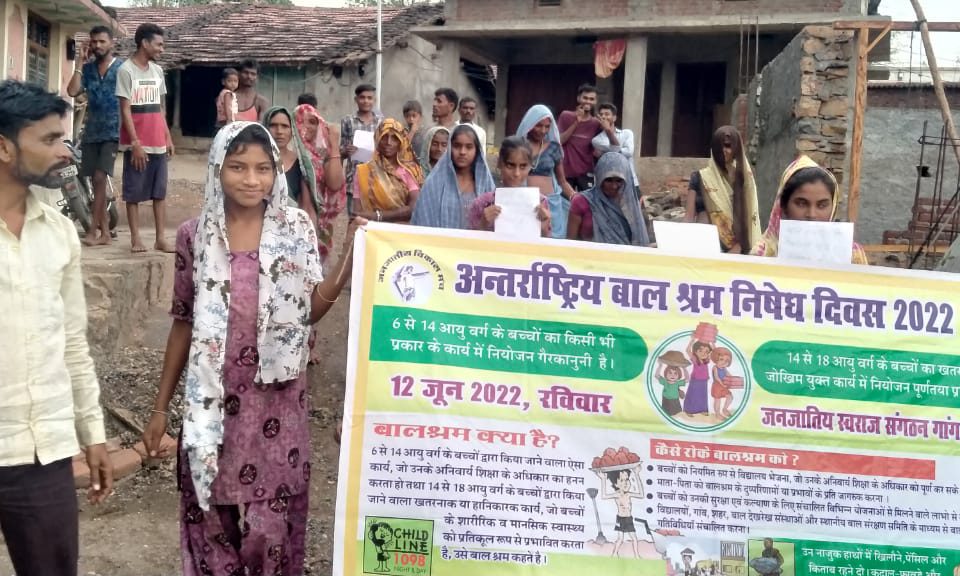
Rise of Freedom: Tribal children chooses their representative in Child Protection Committees
August 18, 2016
Plight of birth registration in Banswara district of Rajasthan: A deep analysis
September 3, 2016Migration is a global phenomenon. People migrate from villages to cities, from one region to another and from one country to another, for a variety of reasons.Since one of the foremost reasons for migration being search for jobs and enhanced quality of life, often migration is equated with upward mobility of people. In the context of increasing migration from villages in Rajasthan to cities in Gujarat, it appears to be more negative than positive, for they are pushed out of their villages on account of their poverty and despair, and continue to live in misery even when they migrate.The case of child labour migration is even worse; the children migrate as child-labour not only by pull and push factors, but domestic compulsions force them to do so. In fact, children are forced out from lesser evil, and made to choose greater evil. Girl-child, especially the adolescent girls, struggle through their own traumatic experiences in the place of migration.
Child migration from Rajasthan has increased significantly, over time. The Hindu in 2009 reported that the figures released by Labour Watch from the national Survey Organisation (NSSO) after its 61st round had put 34.88 lakh children between 5 and 14 years in Rajasthan in the child labour pool. Child labour migration is essentially a socio-economic problem inextricably linked to poverty and illiteracy.
Out of 33 districts of Rajasthan, Banswara is located in the southernmost part of the state. It is bounded on the north by Udaipur district and Chittorgarh district; on the east by Ratlam district of Madhya Pradesh; on the west by Dungarpur district; and on the south by Jhabua district of Madhya Pradesh.
The project area comprises of 100 villages located within the jurisdiction of the Ghatol Block, which comes under of GhatolTehsil in Banswara district of Rajasthan. Ghatol block has a total population of 287101. Out of this, 144092 are males while the females count 143009 here. This block has 52416 children in the age group of 0-6 years. Out of this 27159 are boys and 25257 are girls.. Almost the entire area of the block is undulating and inhabited by the Bhil tribe.
In order to address some of the identified problems, with the support of Save the Children, the Vaagdhara organization has worked out a set of objectives in the project and the primary objective of the project is to reduce child labor& child migration for ensuring the right of children. For this, Vaagdhara formed Child Protection Committees and children groups in 100 project villages. These committees are working for protection of children at the village level. Moreover, Vaagdhara closely works with 89 Aanganwadicenters and Schools for ensuring quality education at the grassroots level as well as project team facilitatesin linking the potential beneficiaries with social protection schemes so, the child labour and migration can bereduced.
According to a survey of nearly 22000 households, almost 8 percent of children are living away from home and they are working in thefields of agriculture, household works and brick kilns (see table and graph).
| S.NO | Children those working in other household | Ghatol |
| 1 | 6-14 yr of age | 1233 |
| 2 | 15-18 yr of age | 2377 |
| 3 | 6-18 yr of age | 3610 |
| � | Migratory Children | � |
| 4 | 6-14 yr of age | 668 |
| 5 | 15-18 yr of age | 1215 |
| 6 | Common | 1923 |
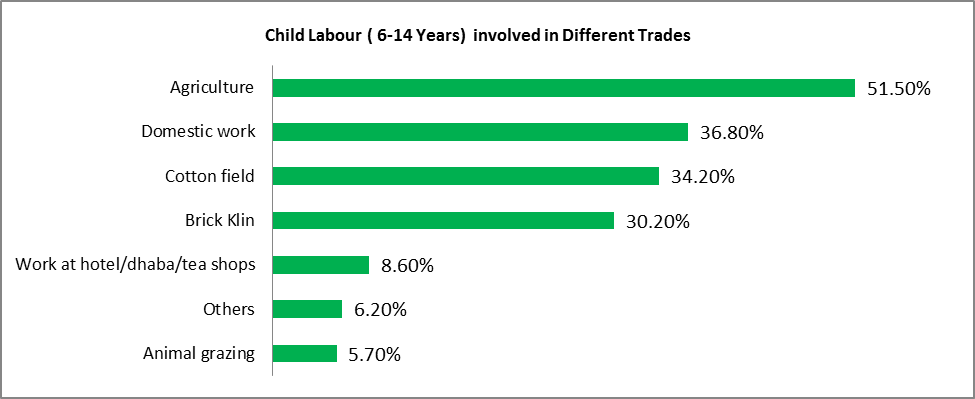
Carrying forward the campaign against child migration and labor organized by District Child Protection Unit, the Integrated Child Protection program and Labor Department from 10th to 12 August, organization has organized the same(program against child labor and migration awareness campaign) in the gram panchayats of projected area. Under this the meeting of the Panchayat level Child Protection Committeeswere also called upon and the discussion on prevention of child labor and migration was done.
Consequently, with the support of district administration Vaagdharais going to oorganizea six-day campaign (August 22 to 27), which will be held at the village level. During the campaign different activites will be carried out such as street plays, puppet shows, film shows, child labor, etc.,for common men Interface. The representatives of the people will be encouraged to work in this direction.
Objectives of the campaign:-
- To create awareness in community for prevent child migration & child labour
- Increased reporting and redressal of the cases related to child migration & child labour
- To sensitize key stakeholder�s towards child protection to stop child migration & child labour
- To create awareness in communities, families and parents on the importance of education
Output of the campaign:-
- The awareness level of the community will be increase on the issue of child labor and child migration
- Cases Related to child labour and migration will be increase at village level
- Reduction in the cases of child labor and migration
- Number of children in the school increases.
Subscribe to our newsletter!


